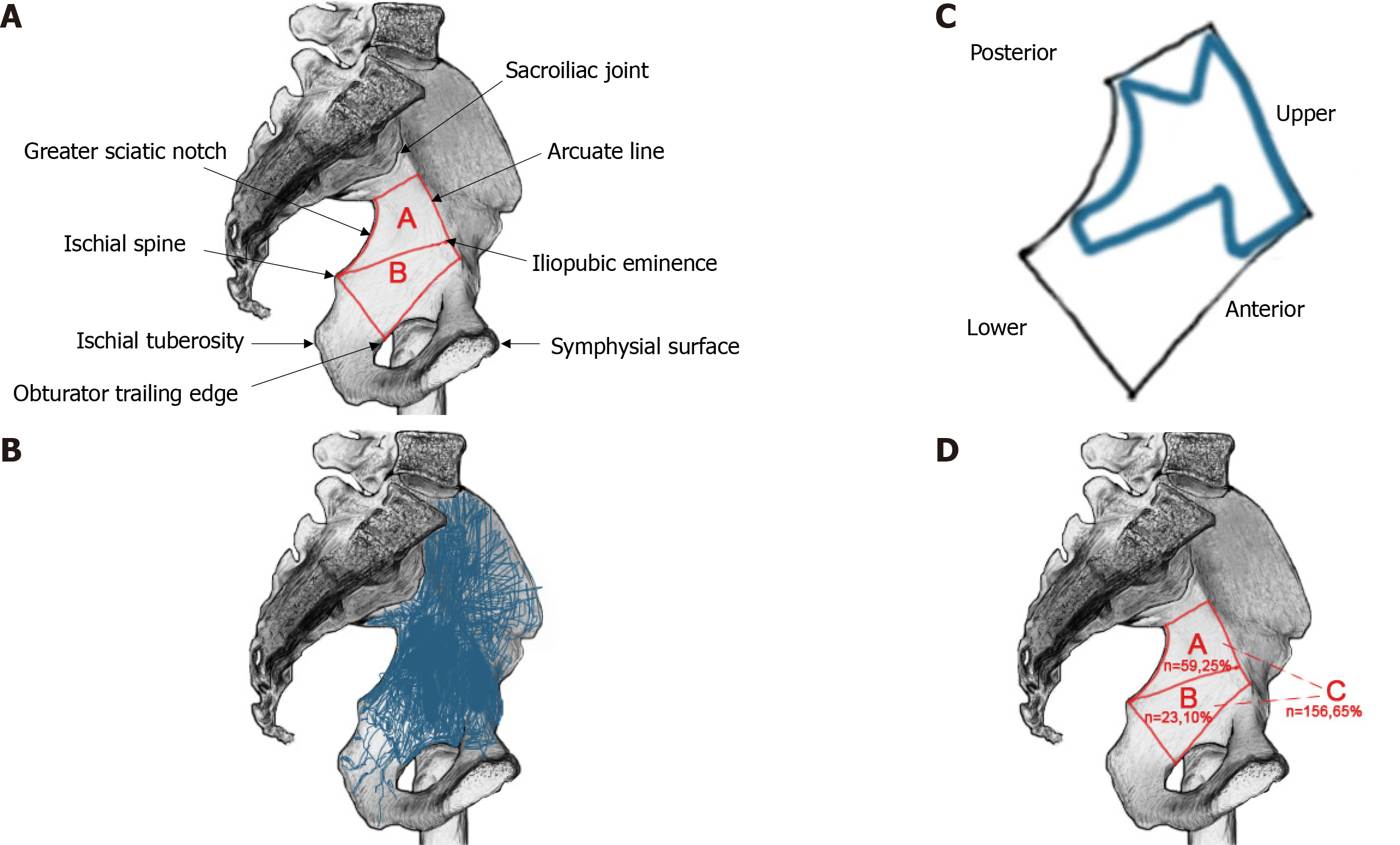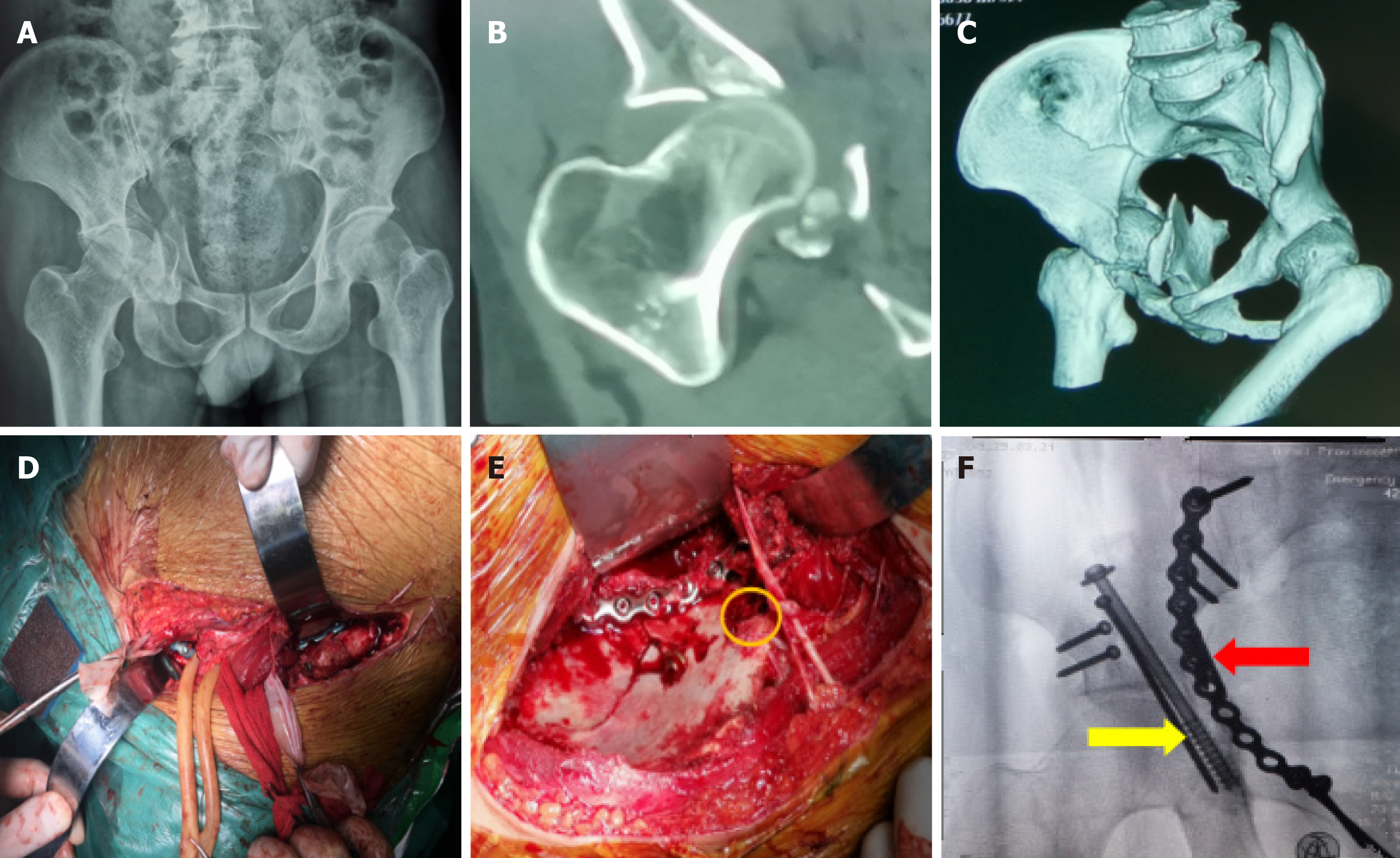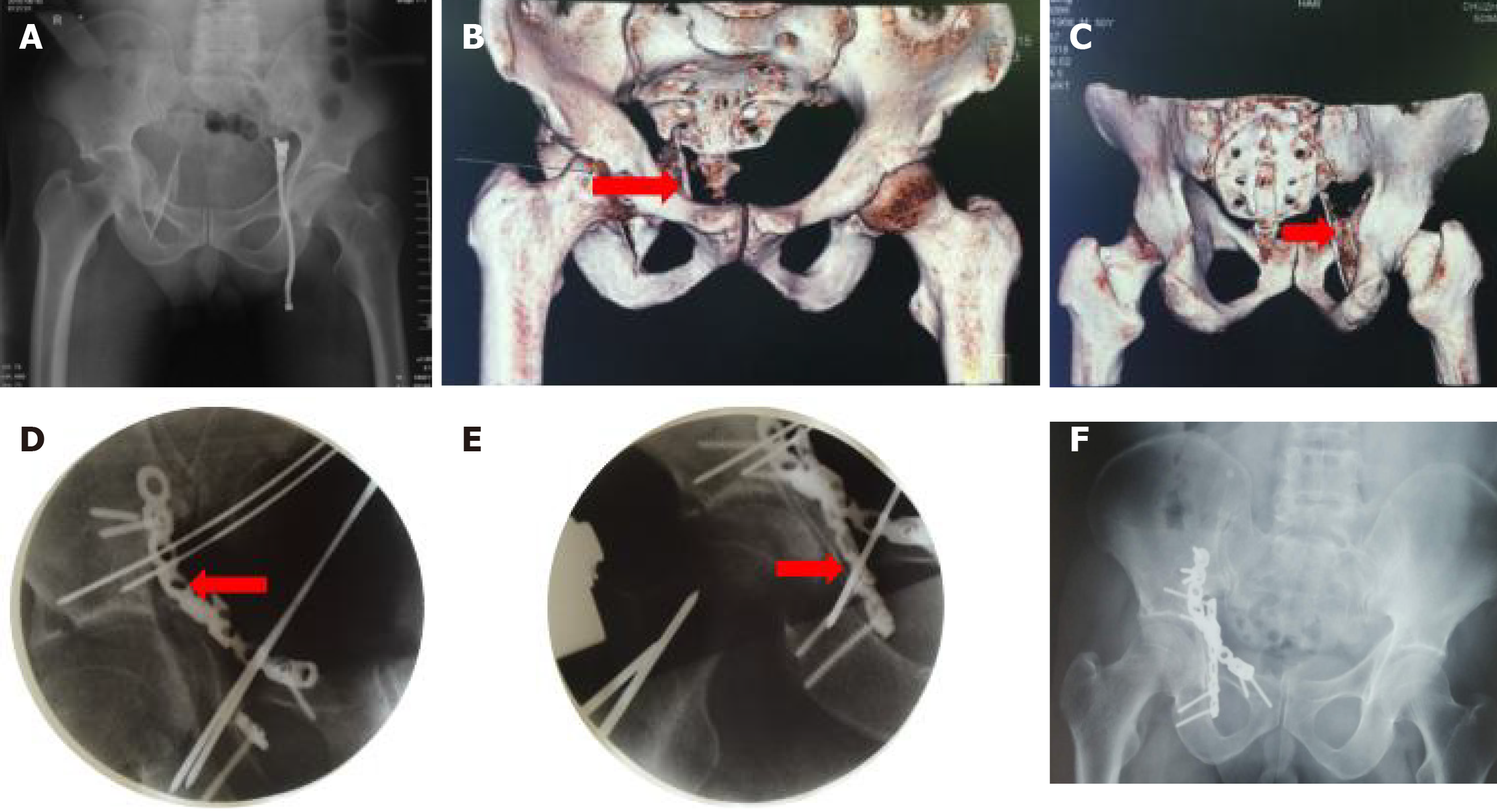Copyright
©The Author(s) 2022.
World J Clin Cases. Jan 14, 2022; 10(2): 412-425
Published online Jan 14, 2022. doi: 10.12998/wjcc.v10.i2.412
Published online Jan 14, 2022. doi: 10.12998/wjcc.v10.i2.412
Figure 1 The classification map of fracture in the quadrilateral plate and the frequency map of different zones affected by fractures were drawn according to the research of Yang etal[14].
A: Hemipelvis anatomy and quadrilateral plate marked by the red lined area; B: This picture shows the fracture lines of all 238 superimposed fractures; C: This picture illustrates the “corridors” in which nearly three quarters of the major fracture lines occurred; D: Coded map showing the frequency (totals, percentages) of all fractures involved in the different zones indicated in the quadrilateral plate.
Figure 2 Surgical treatment of acetabular fracture with central dislocation of the femoral head involving quadrilateral plate through ilioinguinal approach.
A: Acetabular fracture with central dislocation of the femoral head involving the quadrilateral plate (QP); B: Acetabular top compression (seagull sign); C: QP fracture with obvious internal displacement; D: The three classic windows can be exposed by separating and protecting important anatomical structures such as the femoral vessels, femoral nerves and spermatic cord through the ilioinguinal approach; E: A window at the top of the acetabulum (shown by the yellow circle) is used to reduce the compressed articular surface at the top of the acetabulum; F: Intraoperative fluoroscopy (anterior column plate indicated by the red arrow, posterior column screw indicated by the yellow arrow).
Figure 3 Application of the medial ilioischiatic plate in the acetabular fracture with central dislocation of the femoral head involving quadrilateral plate.
A: Radiography of an acetabular fracture with central dislocation of the hip involving quadrilateral plate (QP); B and C: Three-dimensional CT reconstruction (the red arrow indicates a medially displaced QP fracture); D: Anterior column anatomical plate fixation (red arrow) does not prevent medial displacement of the QP fracture; E: Interference of the QP fracture with the medial ilioischiatic plate (shown by the red arrow); F: Postoperative X-ray.
- Citation: Zhou XF, Gu SC, Zhu WB, Yang JZ, Xu L, Fang SY. Quadrilateral plate fractures of the acetabulum: Classification, approach, implant therapy and related research progress. World J Clin Cases 2022; 10(2): 412-425
- URL: https://www.wjgnet.com/2307-8960/full/v10/i2/412.htm
- DOI: https://dx.doi.org/10.12998/wjcc.v10.i2.412











